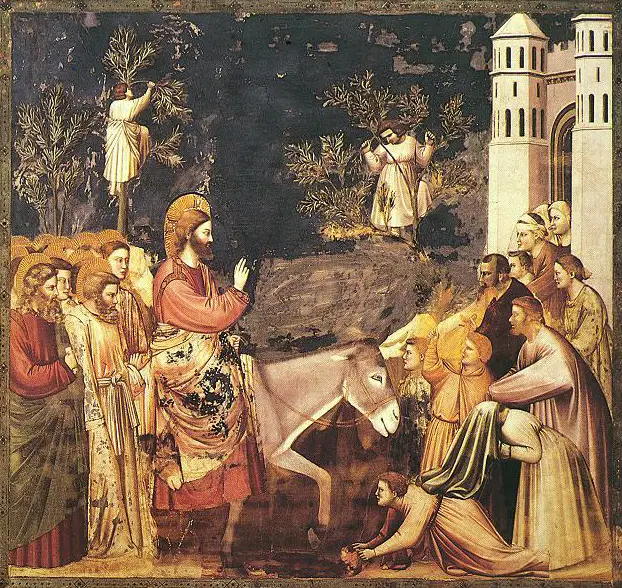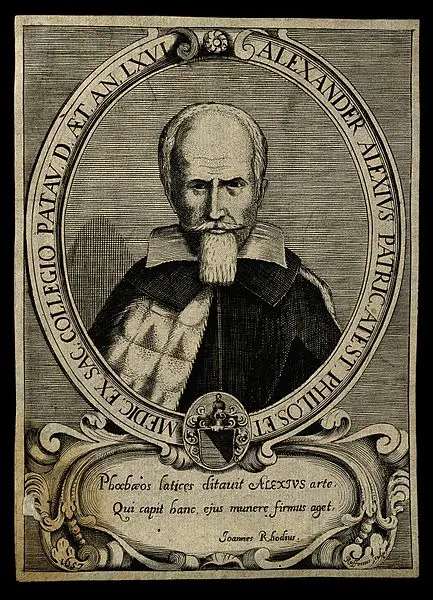 On 18th March 1496, Queen Elizabeth of York, wife of King Henry VII, gave birth to a healthy baby girl at Richmond Palace. The little girl was named Mary and her birth was recorded by Elizabeth in her Psalter. Lady Margaret Beaufort, the King's mother, also recorded Mary's birth in her Book of Hours. On 18th March, Margaret recorded: "Hodie nata Maria tertia filia Henricis VII 1495", or "Today, was born Mary, the third daughter of Henry VII 1495." Although Margaret recorded the date as 1495, this is because the new calendar year did not start in Tudor times until Lady Day, 25th March, so we'd say that she was born in 1496.
On 18th March 1496, Queen Elizabeth of York, wife of King Henry VII, gave birth to a healthy baby girl at Richmond Palace. The little girl was named Mary and her birth was recorded by Elizabeth in her Psalter. Lady Margaret Beaufort, the King's mother, also recorded Mary's birth in her Book of Hours. On 18th March, Margaret recorded: "Hodie nata Maria tertia filia Henricis VII 1495", or "Today, was born Mary, the third daughter of Henry VII 1495." Although Margaret recorded the date as 1495, this is because the new calendar year did not start in Tudor times until Lady Day, 25th March, so we'd say that she was born in 1496.
Mary was the fifth child of Henry VIII and his Queen. Elizabeth would give birth to two more children after Mary however both would tragically die in infancy.
There are no recorded details of what Elizabeth's pregnancy or labour were like, however, looking at her previous pregnancies and the rules surrounding childbirth at the time we can make some educated guesses. Lady Margaret Beaufort had laid out a set of detailed ordinances which dictated the protocol and necessities for her daughter’s lying in chamber. Tudor Society members can view Claire's video on Margaret Beaufort's Ordinances.
The Lying-in chamber was a series of rooms that the Queen would retire to approximately a month before her child was due to be born. The rooms would have been hung with thick tapestries depicting images of happy scenarios, so as not to upset the mother or harm the baby. These tapestries would have covered the walls and windows, with only one window being left open to let in fresh air. It was believed that the room needed to be free of bright light so that no evil spirits would harm the mother or unborn baby. Thick carpets would have been spread over the floors and a fire would have continuously burned. A large bed was provided full of pillows and covered with crimson satin. This choice of colour may have been chosen to hide blood stains, or it is also possible that this large bed was for the mother's comfort and that the actual process of giving birth was conducted in a smaller bed.
The purpose of a lying-in chamber was to recreate the womb, warm and blocked off from the world. It was here that Elizabeth of York would have retired after attending a church service to pray for the safe and healthy delivery of her child. As Queen, she would have been conducted to her lying-in chambers with full dignity and then shut away from the world with her female servants. Her mother, Elizabeth Woodville, supported Elizabeth's previous pregnancies, however, shortly before Mary was born Elizabeth Woodville had died.
Elizabeth of York would have relied upon her Catholic faith during her labour. It is likely that Elizabeth would have prayed and called upon the Saints to support her during this most dangerous time. She may have called upon St Margaret who was the patron said of pregnant women and childbirth, or even held religious relics which were believed to help a mother during labour.
Several days after her birth, the new little Princess would have been christened according to the Catholic rituals at the time. While there are no records of Mary's actual Christening, as a princess it is most likely that her christening would have been similar to that of her older siblings, which again followed strict guidelines set out by Margaret Beaufort. A large stage would have been set up in the chapel, on which a silver gilt font would have stood. The font would have had a rich circular canopy above it, but there would have been no drapes to cover the font as it was vital that all within the chapel witnessed the christening. Little Mary would have been carried up the steps to the font by a duchess, while a second duchess held the chrisom cloth. A countess would carry the richly decorated and ermine-furred train which would have hung from baby Mary's shoulders.
The christening would have been attended by all the highest members of nobility and afterwards Mary would have been returned by a formal progression to her mother who sat in elegance in her chambers.
As was the custom of the time, Mary would not have been breast fed, but given to a wet nurse to be fed. It was of vital importance that the wet nurse was of good health and excellent disposition as she was feeding a member of the royal family.
Unlike Mary's older brother Arthur who was heir to the throne, there has sadly been little recorded about the young princess's life. She would have spent a great deal of time at Eltham with her older siblings, Henry and Margaret. Household records show that Mary's governess was Elizabeth Dento,n who would have been in charge of a number of attendants which included a doctor, teacher, wardrobe keeper and an unknown number of gentlewomen. Mary was always lavishly dressed, her rich clothing paid for by the Great Wardrobe as well as from her mother’s privy purse.
Mary also travelled to such places as Richmond and Greenwich where her parents held court. She would have been educated in French and Latin as well as learning to read and write. She would have also been strictly educated on the roles seen as vital to a female at the time including singing, dancing and learning to play a musical instrument. By the age of thirteen, it was reported that Mary was quite an accomplished musician being able to play both the lute and the clavicle (an early stringed instrument like a piano).
Mary's world would have been cast into shock when she was just six years old because it was then that her older brother and the heir to the English throne, Arthur, died. Worse was to come when less than a year later Mary's mother died on 11th February 1503. Not only had Mary lost her brother, but she had also lost her mother and, worse, her older sister Margaret, whom she had grown up with, left in June for Scotland and marriage to the Scottish King James V. In the span of a year Mary had lost, in some form or another, three members of her family. It is believed that through losing their mother and siblings Mary and her older brother Henry became closer.
When Mary was just fifteen years of age, Erasmus wrote that "Nature has never formed anything more beautiful; and she excels no less in goodness and wisdom". The Venetian Ambassador to the court of Henry VIII described Mary as "a Paradise—tall, slender, grey-eyed, possessing an extreme pallor." It is not surprising to hear that Mary was described as such a beauty, after all her mother Elizabeth of York and her grandmother Elizabeth Woodville, were both known for their majesty and beauty.
Mary would go on to have an illustrious, yet somewhat scandalous, life. On 21 December 1507, at the age of just eleven, she was contracted to marry Charles of Castile, who would later become Charles V, Holy Roman Emperor. The contract was called off in 1513 and in 1514, at the age of eighteen, Mary married the fifty-two year-old King Louis XII of France. After his death on 1st January 1515, just three months after the wedding, Mary scandalously went on to marry Charles Brandon, the newly created Duke of Suffolk. This marriage, far beneath Mary's station, caused quite an uproar back in England. However, the Duke was Henry VIII's most beloved friend and Mary his favourite sister. Despite a huge fine being levied upon both (of which hardly any was repaid) Mary and Charles returned home and were married in a third, public ceremony on the 13th May 1515 at Greenwich.
Mary had four children with her second husband, two sons and two daughters. Sadly, her first son, Henry, died at the age of just six years. Throughout her life, Mary continued to style herself as Dowager Queen of France and continued to receive her dowager payments from France on and off until her death. Mary died at Westhorpe Hall in Suffolk on 25th June 1533, aged just 37. She had been in poor health for some time leading up to her death, although the exact cause remains unknown. Mary was buried in Bury St Edmunds' Abbey and then, after the Dissolution of the Monasteries, she was moved to St Mary's Church in Bury St Edmunds.
Sarah Bryson is the author of Mary Boleyn: In a Nutshell. She is a researcher, writer and educator who has a Bachelor of Early Childhood Education with Honours and currently works with children with disabilities. Sarah is passionate about Tudor history and has a deep interest in Mary Boleyn, Anne Boleyn, the reign of Henry VIII and the people of his court. Visiting England in 2009 furthered her passion and when she returned home she started a website, queentohistory.com, and Facebook page about Tudor history. Sarah lives in Australia, enjoys reading, writing, Tudor costume enactment and wishes to return to England one day. She is currently working on a biography of Charles Brandon, Duke of Suffolk.
Sources
Image: Margaret Beaufort's Book of Hours, British Library.
- Licence, Amy 2012, In Bed with the Tudors: The sex lives of a dynasty from Elizabeth of York to Elizabeth I, Amberley Publishing, Gloucestershire.
- Loades, David 2012, Mary Rose, Amberley, Gloucestershire.
- Oxford Dictionary of National Biography Brandon, Mary Tudor, 2016, Oxford University Press, viewed 22 February 2016, http://www.oxforddnb.com/
- Perry, Maria 2002, Sisters to the King, Andre Deutsh, London.
- Ridgway, C 2010, Princess Mary Tudor, The Anne Boleyn Files, viewed 22 February 2016, < http://www.theanneboleynfiles.com/princess-mary-tudor/>.
- Sadlack, Erin 2001, The French Queen’s Letters, Palgrave Macmillan, New York.



Thank you for this article.
She experienced such cruel loss at a young age.
Her marriage to Charles Brandon showed her to have a willful spirit equal to that of her brother, Henry – yet she was loyal as well, as demonstrated by her support for Catherine of Aragon during the run-up to the Anne Boleyn debacle.
What a wonderful description of Mary, her mother Elizabeth. I felt as if I were there as the biography was being written. It is a very beautiful yet sad story. I felt her pain when she lost her brother and sister. When she lost her mother, it reminded me of Mary Todd, wife of President Lincoln, when she lost her mother at the age of 6. It was very devastating to her, as I am sure it was devastating to Mary when her mother died.
Mám ráda historii, články jsou zajímavé